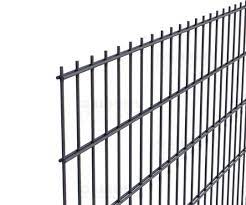In age rapid development and increasing urbanization, the building of fences (ploty) has surfaced as a vital concern for strengthening structure with enviromentally friendly dependability. As societies attempt to safe residence boundaries, protect normal habitats, and deal with terrain use, the adoption of eco friendly fencing procedures has grown to be important in mitigating ecological impacts although meeting social requires.
Main to the very idea of environmentally friendly fencing is the recognition that classic methods can inadvertently cause harm to ecosystems. Typical components like treated hardwood or galvanized metal, while durable, might leach damaging chemicals into the dirt or waterways, posing risks to wildlife and human well being. In addition, the indiscriminate positioning of fences can fragment environments, disrupt animals corridors, and impede the natural activity of species.
To address these challenges, environmentally friendly fencing stresses using eco-friendly resources and design methods that lessen environmental damage. Bamboo, for instance, has become popular like a replenishable option to standard hardwood fencing, offering speedy development prices and small environmental footprint. Similarly, recycled plastic-type material composites offer longevity with no environmental drawbacks of virgin plastic materials or aluminum alloys.
Additionally, proper positioning and considerate style capabilities can increase the ecological functionality of fences. By including wild animals passages, including culverts or step ladder-like structures, fences can aid the movements of pets across fragmented countryside, promoting genetic connectivity and species strength. Likewise, permeable boundaries enable the passing of little mammals, amphibians, and valuable bugs while still keeping stability goals.
In gardening contexts, lasting fencing practices position with concepts of regenerative territory management. Electric fencing, as an example, enables accommodating rotational grazing systems that imitate organic grazing designs, advertising soil well being, biodiversity, and carbon sequestration. Moreover, integrating residing fences composed of local shrubs or grasses increases habitat connectivity and offers ecosystem providers for example erosion management and animals habitat.
By embracing sustainable fencing options, facilities jobs can harmonize individual requires with ecological imperatives, encouraging sturdy panoramas for generations to come. Via advancement, partnership, along with a persistence for stewardship, we could put together boundaries that does not only defend residence but also sustain the wealthy tapestry of life on the planet.
